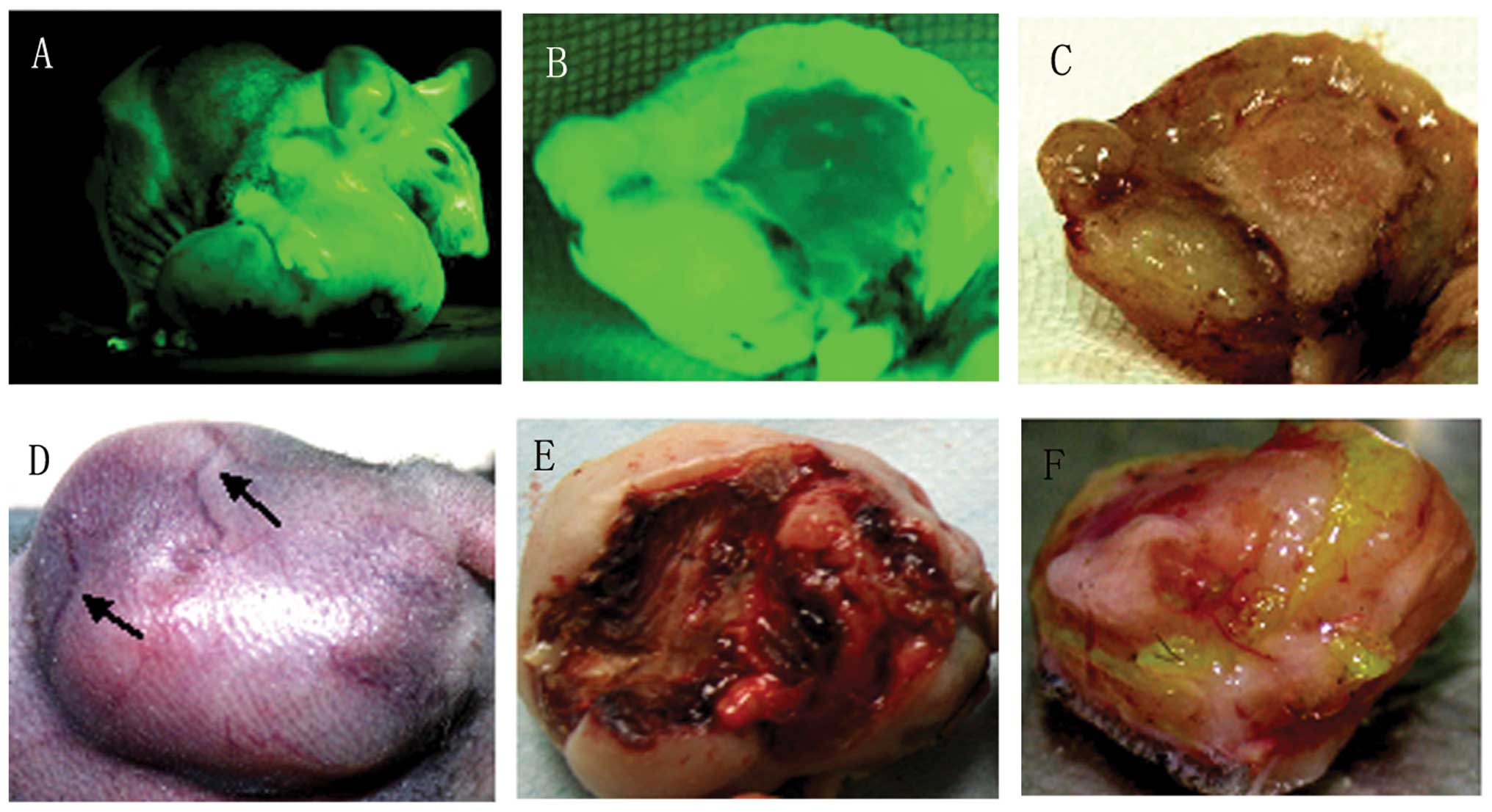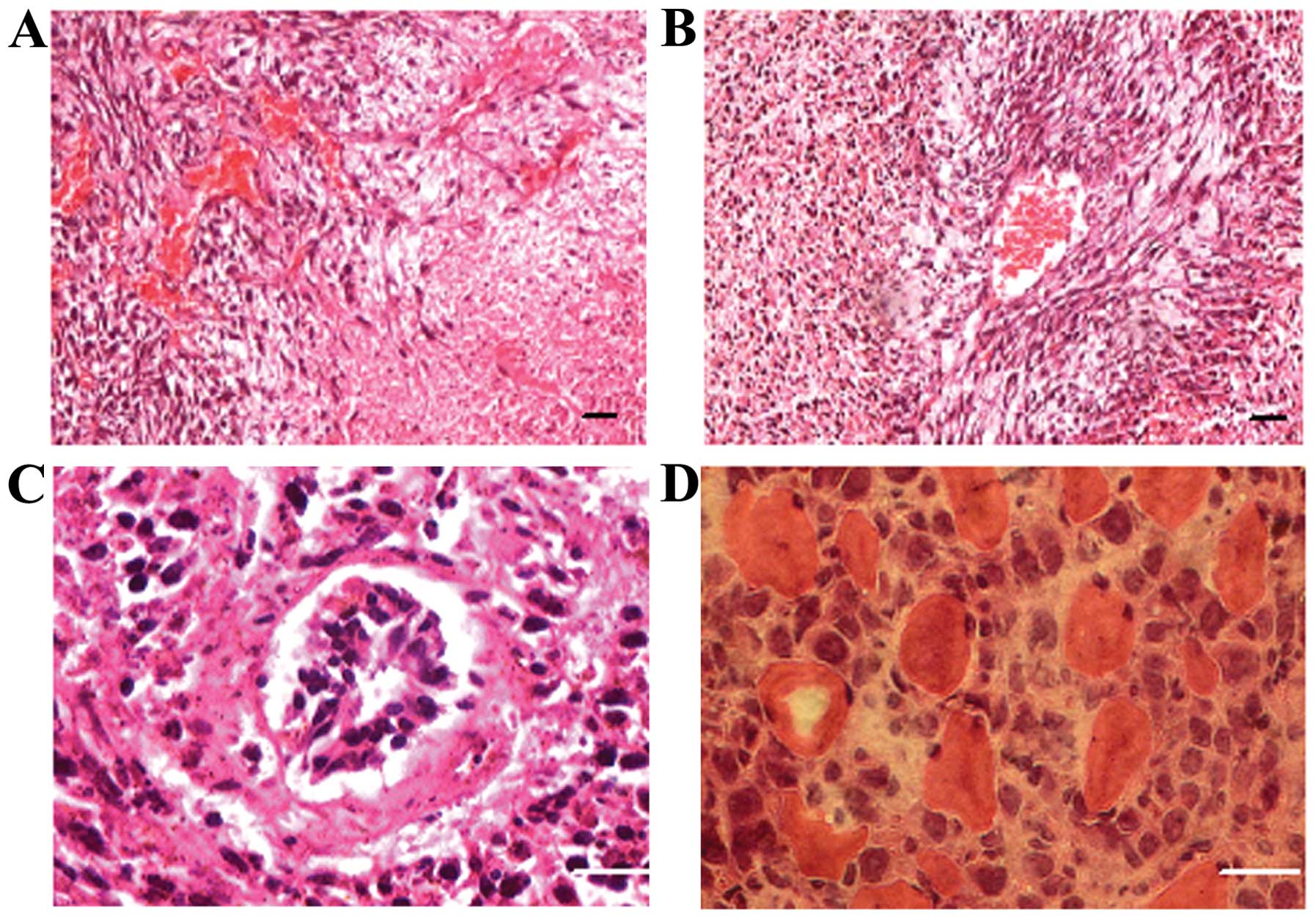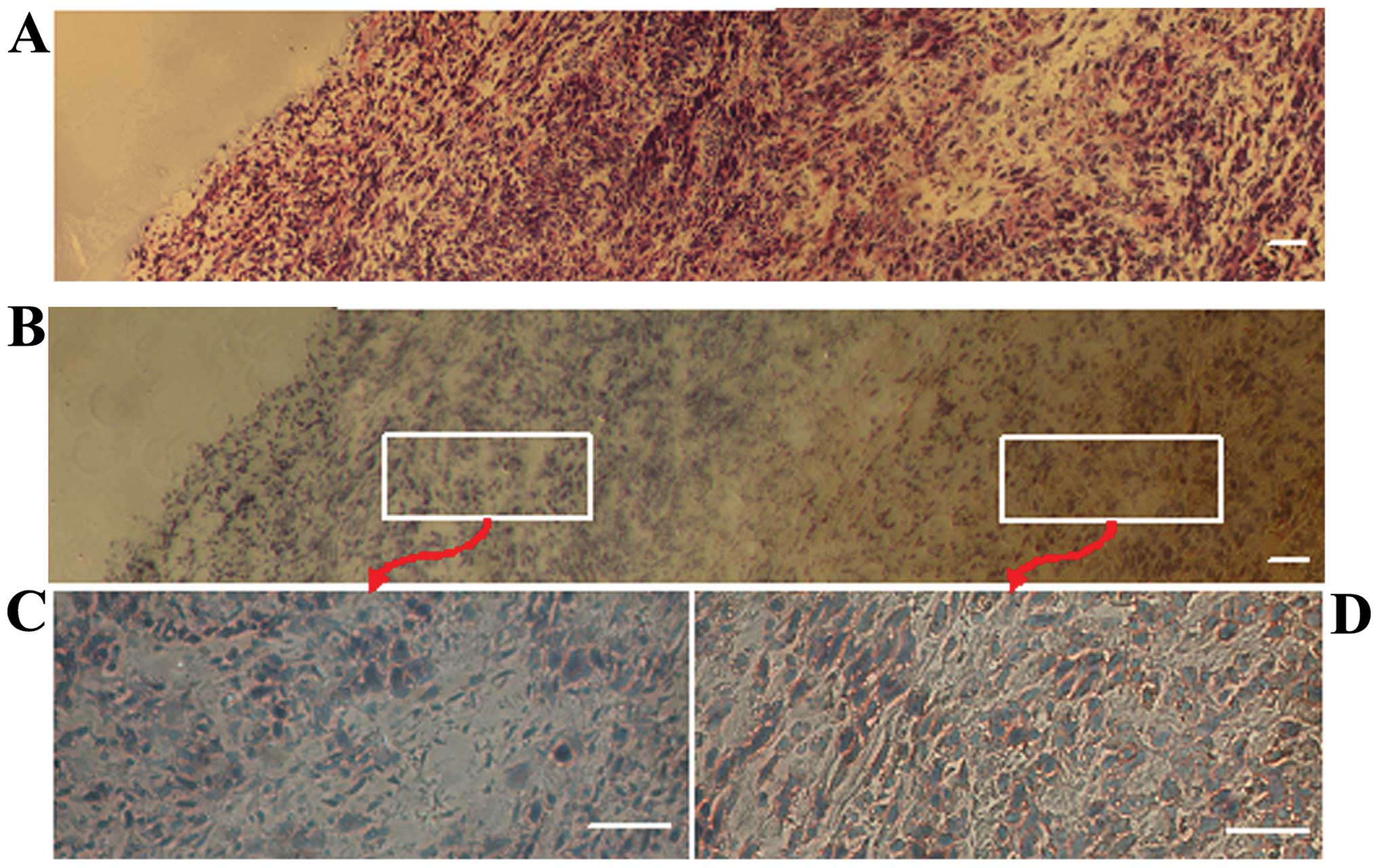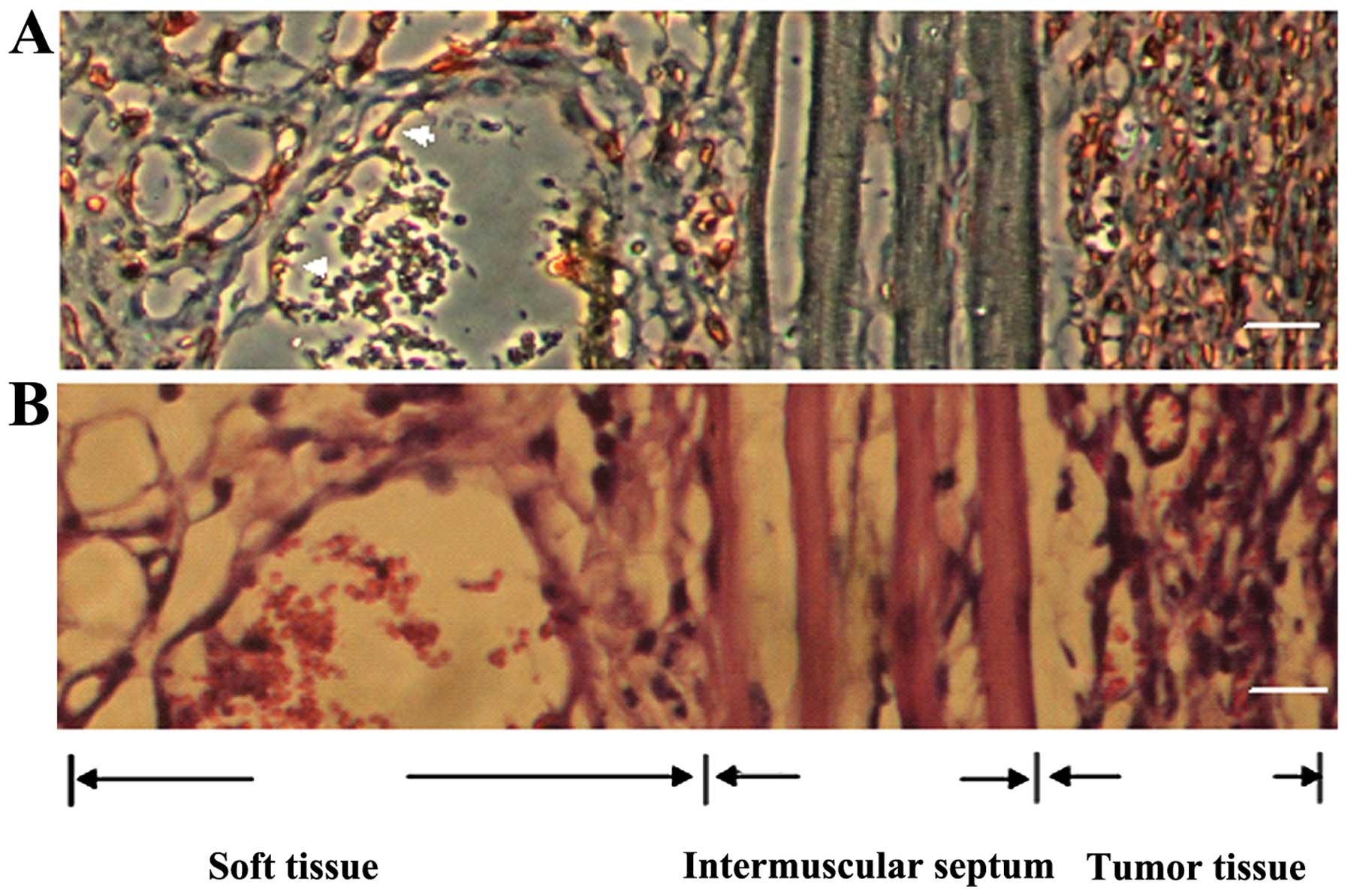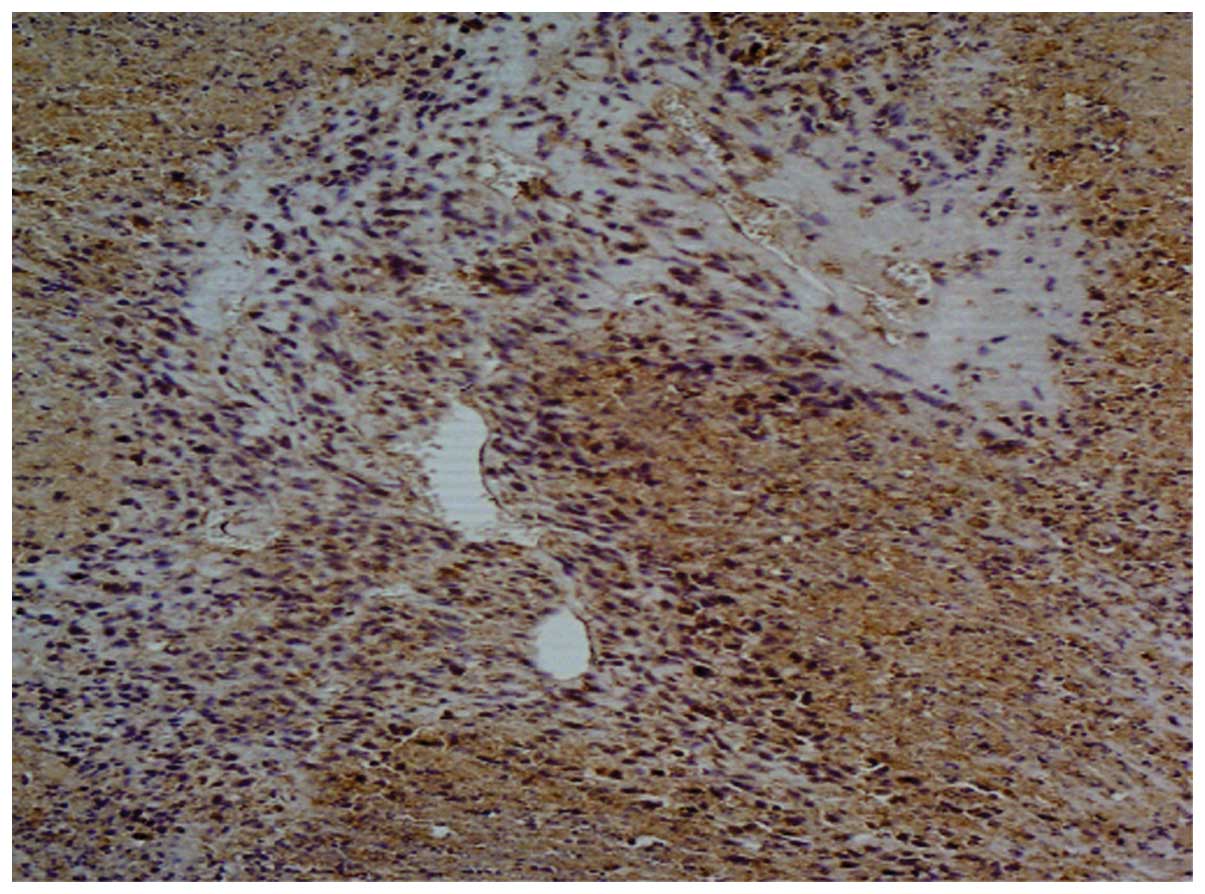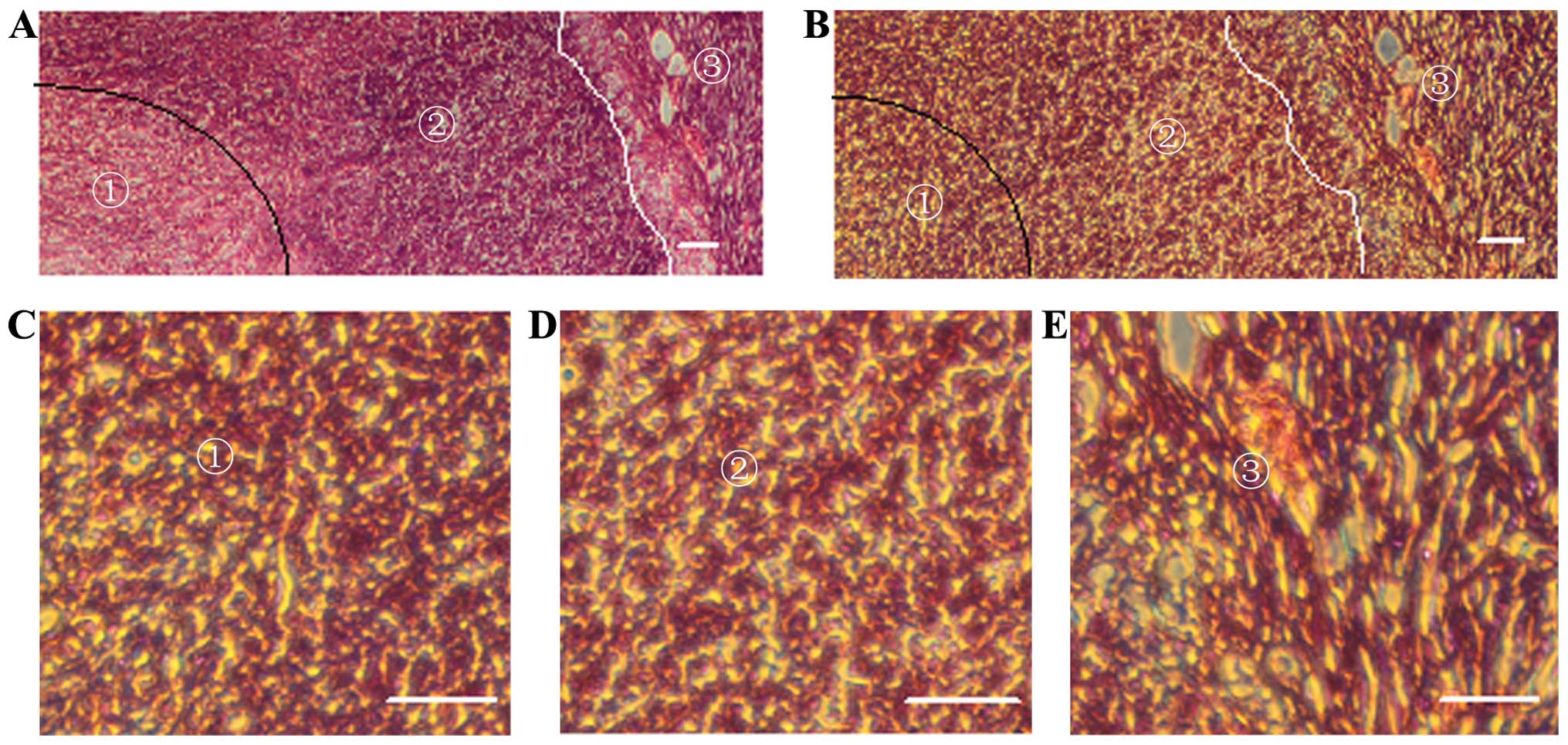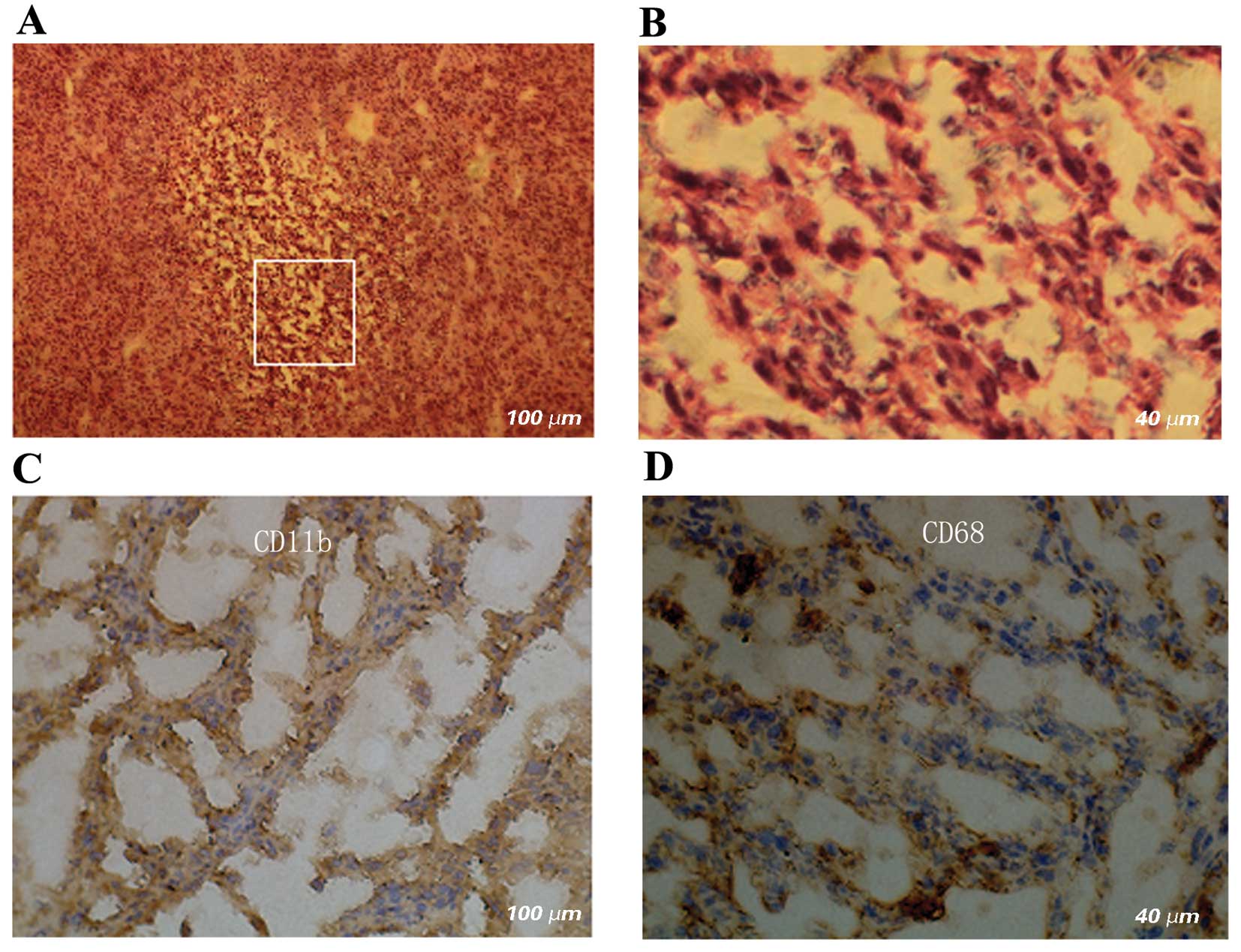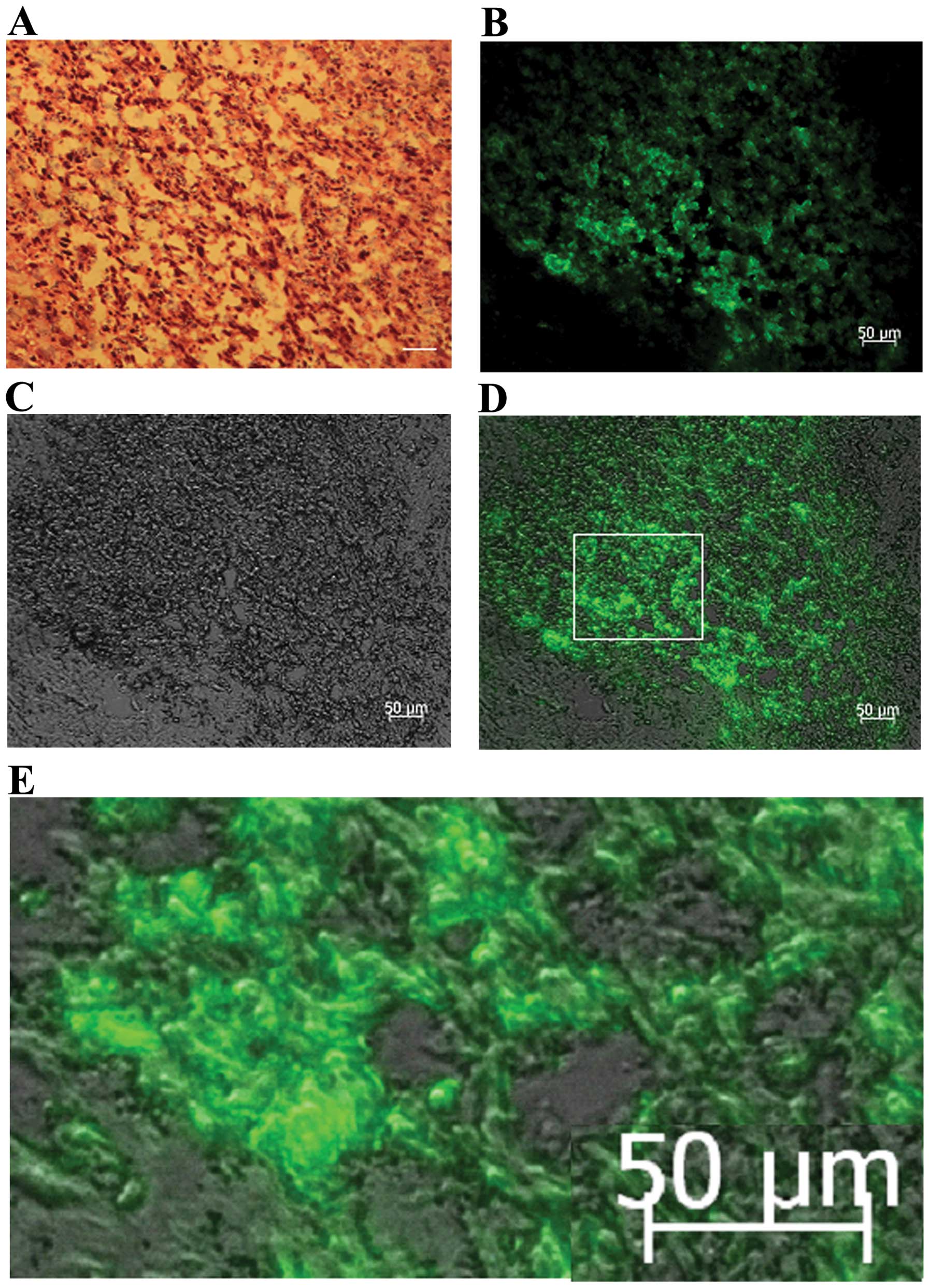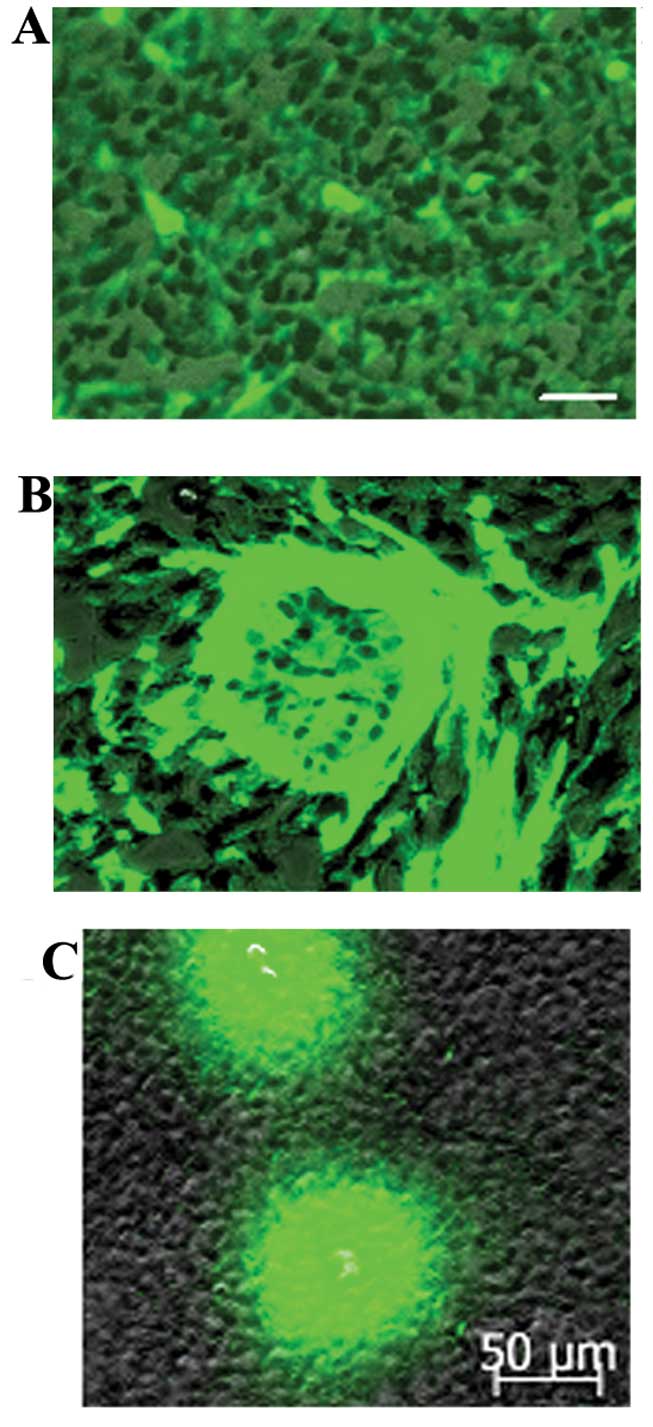Spandidos Publications style
Lu Z, Lv K, Zhang J, Dai C, Liu B, Ma X, He L, Jia J, Chen Y, Dai X, Dai X, et al: Establishment of a green fluorescent protein tracing murine model focused on the functions of host components in necrosis repair and the niche of subcutaneously implanted glioma. Oncol Rep 31: 657-664, 2014.
APA
Lu, Z., Lv, K., Zhang, J., Dai, C., Liu, B., Ma, X. ... Huang, Q. (2014). Establishment of a green fluorescent protein tracing murine model focused on the functions of host components in necrosis repair and the niche of subcutaneously implanted glioma. Oncology Reports, 31, 657-664. https://doi.org/10.3892/or.2013.2873
MLA
Lu, Z., Lv, K., Zhang, J., Dai, C., Liu, B., Ma, X., He, L., Jia, J., Chen, Y., Dai, X., Wang, A., Dong, J., Zhang, Q., Lan, Q., Huang, Q."Establishment of a green fluorescent protein tracing murine model focused on the functions of host components in necrosis repair and the niche of subcutaneously implanted glioma". Oncology Reports 31.2 (2014): 657-664.
Chicago
Lu, Z., Lv, K., Zhang, J., Dai, C., Liu, B., Ma, X., He, L., Jia, J., Chen, Y., Dai, X., Wang, A., Dong, J., Zhang, Q., Lan, Q., Huang, Q."Establishment of a green fluorescent protein tracing murine model focused on the functions of host components in necrosis repair and the niche of subcutaneously implanted glioma". Oncology Reports 31, no. 2 (2014): 657-664. https://doi.org/10.3892/or.2013.2873















